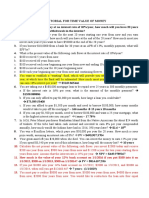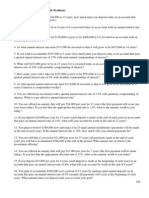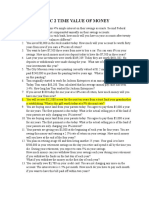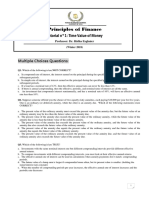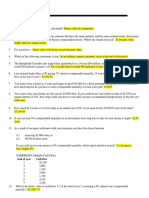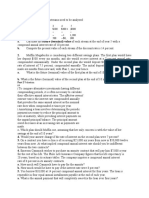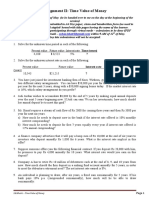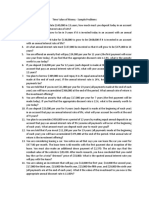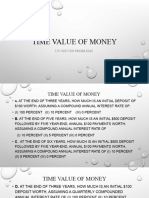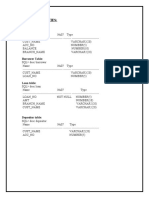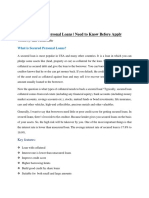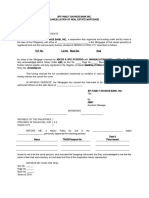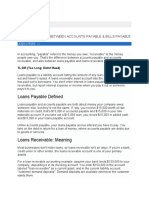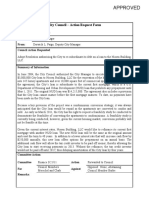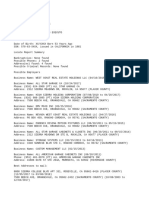CHAPTER
TIME VALUE OF MONEY (CLASS EXERCISES I)
1. Your grandfather has offered you a choice of one of the three alternatives: $ 5,000 now; $ 1,000 a
year for eight years; or $12,000 at the end of eight years, assuming you could earn 11 percent
annually, which alternative should you choose? If you could earn 12 percent annually, would you
still choose the same alternative?
�2. You need $30,750 at the end of eight years, and your only investment outlet is a 12 percent long-
term certificate of deposit (compounded annually). With the certificate of deposit, you make an
initial investment at the beginning of the first year.
3. Brain Hirt stared a paper route on January 1, 1980. Every three months, he deposits $250 in his bank
account, which earns 8 percent annually but is compounded quarterly. On December 31, 1984, he
used the entire balance in his bank account to invest in a certificate of deposit at 12 percent
annually. How much will he have on December 31, 1987
�4. On January 1, 1985, Mr. Strong bought 100 shares of stock for $13 per share. On December 31,
1987, he sold the stock for $20.50 per share. What is his annual rate of return? Interpolate to find
the exact answer.
�5. Donald Johnson has just given an insurance company $20,000. In return, he will receive an annuity
of $1,800 for 20 years. At what rate of return must the insurance company invest this $20,000 in
order to make the annual payments? Interpolate.
6. Mary Mills has retired after 35 years with the Electric Company her total pension funds have an
accumulated value of $300,000, and her life expectancy is 18 more years. Her pension fund manager
assumes that she can earn an 8 percent return on her assets. What will her yearly annuity be for the
next 18 years?
�7. You wish to retire in 20 years, at which time you want to have accumulated enough money to
receive an annuity of $12,000 for 25 years after retirement. During the period before retirement you
can earn 8 percent annually, while after retirement you can earn 10 percent on your money. What
are your annual contributions to the retirement fund to allow you to receive the $12,000 annuity?
�8. If you borrow $9,725 and are required to repay the loan in five equal annual installments of $2,500,
what is the interest rate associated with the loan?
9. If your uncle borrows $50,000 from the bank at 10 percent interest over the eight-year life of the
loan, what equal annual payments must be made to discharge the loan, plus pay the bank its
required rate of interest (round to the nearest dollar)? How much of his first payment will be
applied to interest? To principle? How much of his second payment will be applied to each?
� Amortization Schedule
10. If investors are to earn a 4 percent real interest rate, what nominal interest rate must they earn if
the inflation rate is:
a. zero
b. 4 percent
c. 6 percent
�11. EAR versus APR. You invest $1,000 at a 6 percent annual interest rate, stated as an APR. Interest is
compounded monthly. How much will you have in 1 year? In 1.5 years?
�12. Perpetuities. A local bank advertises the following deal: “Pay us $100 a year for 10 years and then
we will pay you (or your beneficiaries) $100 a year forever.” Is this a good deal if the interest rate
available on other deposits is 8 percent?
13. Perpetuities. A local bank will pay you $100 a year for your lifetime if you deposit $2,500 in the
bank today. If you plan to live forever, what interest rate is the bank paying?
14. Perpetuities. A property will provide $10,000 a year forever. If its value is $125,000, what must be
the discount rate?


